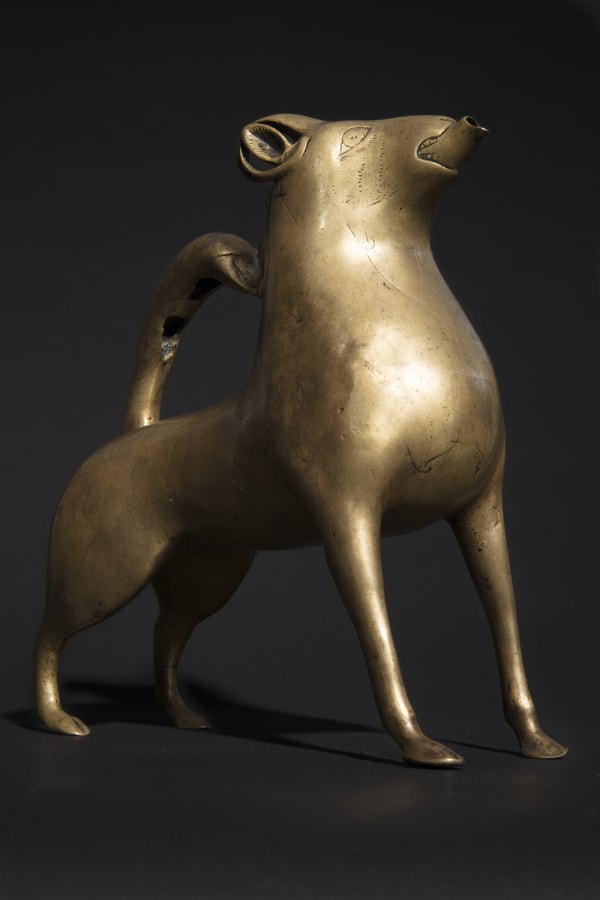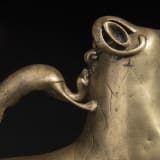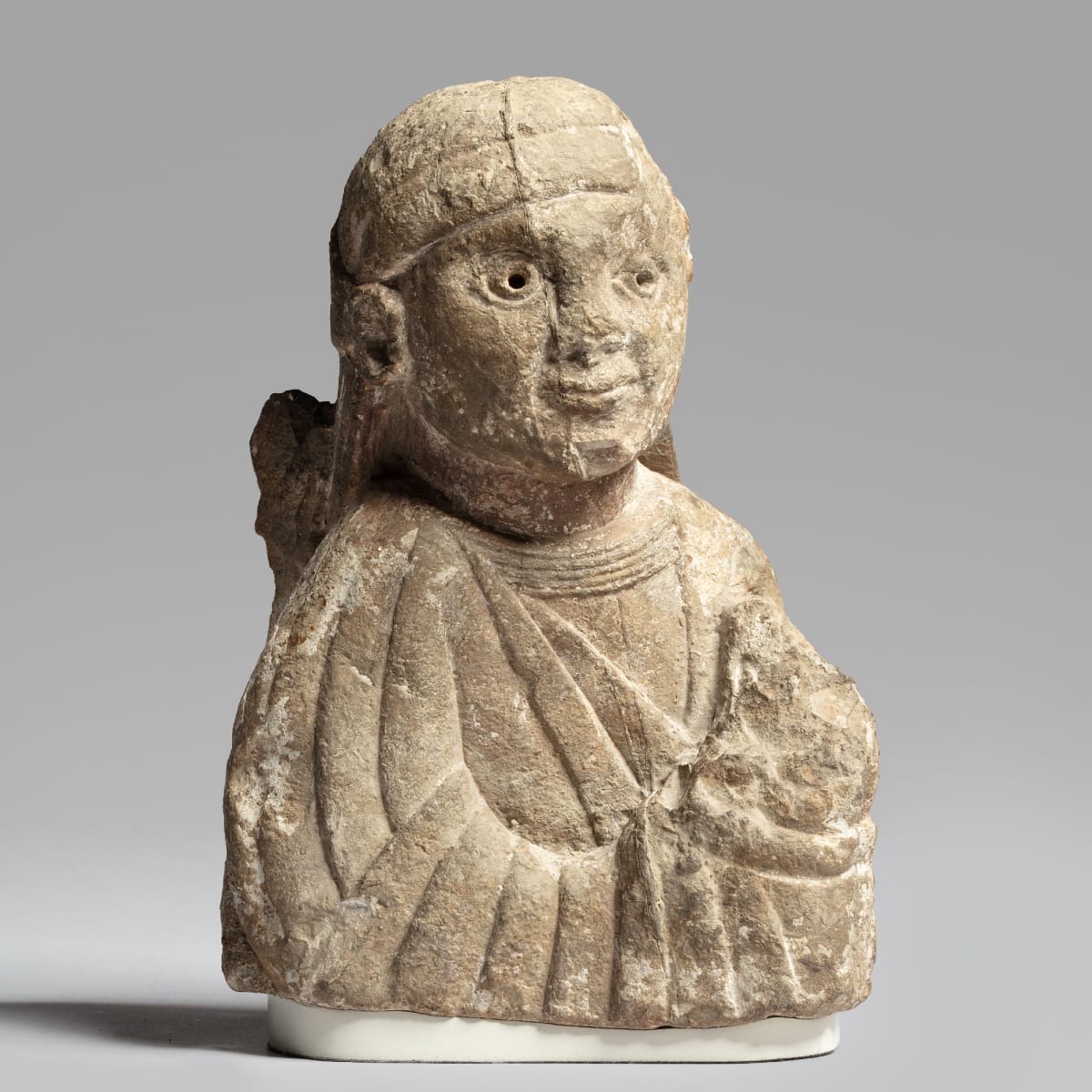



An aquamanile in the form of a ram
This fine aquamanile takes the form of a statant ram with almond shaped eyes and small horns that curl upwards and back behind the ears. The ram holds a spout in its mouth, which is outlined with a row of teeth. Decorative incised details on the face, horns and body have mostly been worn away but the eyes are defined with short radiating lines and a scale-like pattern is still visible on the ram's back and neck. The handle of the aquamanile takes the form a tailed serpent who springs from the rump of the ram with an arched back and whose paws dig into the back of the ram's head. The serpent would have probably originally had wings incised on its body, which are now lost due to surface wear. The head of the serpent, which is engraved with lines around the eyes, appears to open its mouth wide and 'bite' onto the ram's lower back.
Aquamanilia, from the Latin for aqua (water) and manus (hand), are a form of human- or animal-shaped bronze vessel, made between the twelfth and sixteenth centuries across northern Europe, and used during the medieval period for handwashing ceremonies, in both domestic and liturgical contexts. They remain the earliest known examples of hollow bronze casting in Europe and utilised the lost wax process to create an evenly moulded, thin, and smooth surface to the material, completely watertight and highly durable. They range in size, shape, and style, and with the exception of those examples that incorporate spigots in order to allow the vessels to remain stationary during use, most aquamanilia would have necessitated a loaded and complex ceremony between two or more parties, in which the hands are washed by another participant as part of social and liturgical rituals. This particular vessel would have been filled from the top of the head, with water being poured out through the mouth.
Scientific analysis was instrumental in the research process as it allowed us to better understand the composition of the metal used in making this aquamanile. The semi quantitative results of an X-Ray Fluorescence test, in particular for the impurities, were found to be comparable with objects manufactured during the 13th century. The analysis was conducted by Yannick Chastang in February 2020 and is available upon request.
Stylistically, this aquamanile can be compared to examples from Saxony, such as the rooster aquamanile in the Metropolitan Museum of Art which features similar decorative elements as the presently discussed ram. Albeit much more prominent, the style of the incision lines that represent the rooster's feathers are especially comparable with the scale-like pattern on the ram's back. Another comparison can be made with an aquamanile in the form of a Falconer on Horseback also in the Metropolitan Museum of Art. The falconer's horse has similarly rendered details, such as the almond shaped eyes and incision lines around them, but also a similar stance to our ram. An additional comparison can be found in the composition of the metal of the falconer, as determined by the XRF analysis, which is further illustrated by a similar level of surface wear on both examples.
This aquamanile is also representative of objects that are considered to have occupied the marginal realm of medieval art, where the medieval imagination often had some freedom of expression. Their iconographies included animals (both real and imagined), secular subjects and humorous compositions. The fascination with animals in the Middle Ages was also linked to the stories told of creatures encountered by travellers, resulting in animal imagery appearing in bestiaries but also in religious and secular objects. The focus was not only real animals but also those created in the medieval imagination, such as griffins, unicorns and dragons. Aquamanilia, which occupied the margins of medieval art, thus proved to be an ideal medium for these creatures. The diversity and number of examples that still survive testify to the popularity of aquamanilia in the Middle Ages whilst remaining some of the most desired objects today.
Provenance:
Sold Sotheby's London Dec 12 1974 lot 8;
Sold Sotheby’s NY 7 Dec 1979 lot 250;
Collection of Edward R. Lubin (1928-2004), New York, (acquired at Sotheby’s 22 April 1986, lot 6);
With Brimo de Laroussilhe, Paris since 2004









